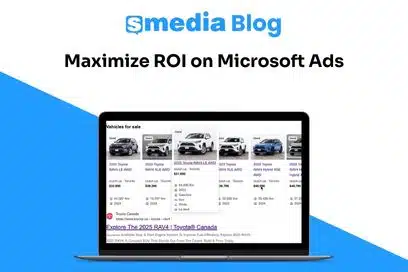Making Marketing Decisions in A Tough Market

Head of Customer Experience
When I started to write this, my initial thought was to write about how dealers and the automotive industry are facing some upcoming challenges with inventory and inflation… but I stopped myself because in all reality the automotive industry and dealers in particular have been turned on their heads for the last 3 years. So I’m going to start with,
“Hold on to your hats. We’re in for another wild ride.”
- Inventory production is catching up
- The used vehicle market is cooling off
- There are concerns over interest rates and affordability
- Leads seem to be slowing down
- We’re starting to see vehicles on dealer lots and discounting is coming back
- We’re still seeing restrictions on allotment and ordering
- During Covid, customers started keeping their vehicles for a longer time
- The OEM Dealer Model is shifting
- We’re facing a potential recession
With all that, dealers are understandably concerned about their business, about maintaining margins and sales momentum.
Any time the market hits a flux, our first instinct is to reduce spending. I get it. As a business owner or manager, uncertainty typically means you need to tighten the purse strings BUT should you stop marketing in a tough market?
I’m certainly biased given my chosen career but if I were running a dealership, the answer would be NO.
A tough market is smaller, a tough market is slower but a tough market still has opportunity – and you still need to sell cars and book your service lanes.
Pulling your marketing budgets in a tough market will only mean that you get less of what is available.
So what should you do?
-
Build your brand.
Stop advertising solely based on price and product. What makes your dealership better than any other dealership? What’s your commitment to customers who choose you?
Figure this out and start talking about it on social media, your website, videos, and ads – everywhere you have an audience. You need to be top of mind for in-market shoppers, and the only choice for past customers. Make your dealership the first place they look and the only place they’ll talk to.
Hot Tip: ***Make sure that what you’re saying about your brand is true and that your whole team lives this commitment. If you say you offer all-in pricing, make sure your team is quoting all-in pricing.
-
Understand the customer experience at your dealership
-
Evaluate your digital experience. How can a customer interact with your dealership online? Do you make it easy for them to find the information they’re looking for? Is everything they may want to know about a vehicle hidden behind a data capture form? Is your digital experience aligned with your brand? Are you providing a seamless digital experience?
It’s 2022 after all, it’s not just encouraged, it’s expected.
-
Evaluate your sales and finance processes. Understand your customer experience when they do get to the dealership to ensure you have no leaks. Are you making the most of every opportunity that walks through your door, picks up the phone, or emails your dealership?
For the last two years, we’ve had more customers than cars and it’s easy to see that a sales team may have become complacent with follow-up, lead handling, or appointment setting and process. If you identify any inconsistencies or gaps in the process, take steps to re-train your teams and get everyone on the same page.
-
-
Use data to guide your decisions.
Do you understand where your traffic, ups, and sales are coming from? Have you evaluated your CRM reporting and your digital analytics to understand what is actually driving your results? Better yet, are you using an attribution platform to tie your online and offline results together so you have a clear picture of which of your efforts are actually selling cars?
A lot of dealerships are still reliant on vendor reports to make decisions about what’s working and what’s not. The problem is that vendor reports are built for the vendor – they don’t give you a complete picture of YOUR business. A website vendor only reports on their tool and typically won’t include reporting on your trade tool or chat tool. A dealership should have its own analytics or reporting tool to track what’s important to them.
With all of the change in the last 3 years, Dealers continue to adapt, survive and even thrive. As you’re faced with new challenges and decisions to make, I encourage you to double down on good processes and good data. It’s going to be increasingly important to not only hold on to your hat but make sure your hair is in place as well.
E.R.





